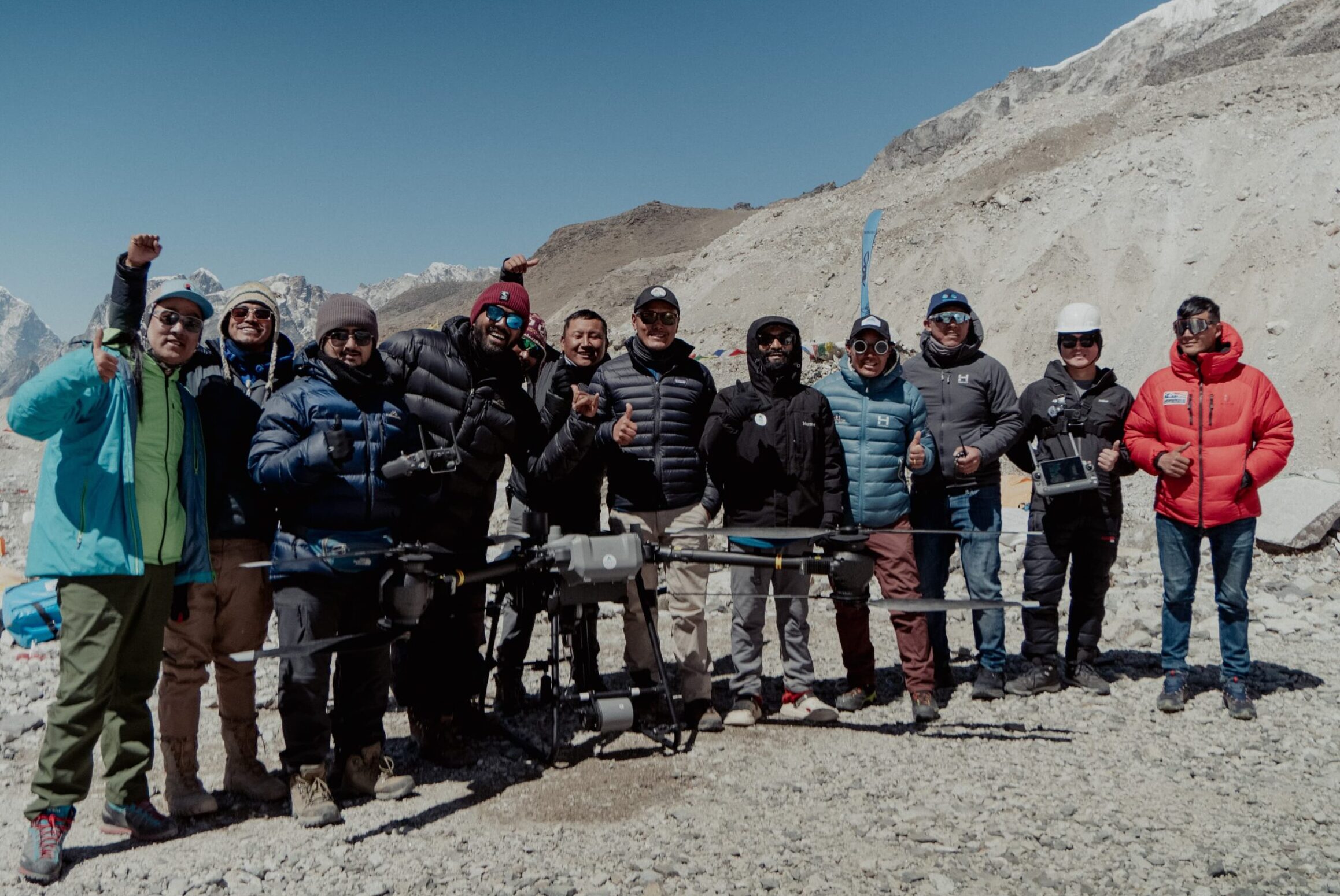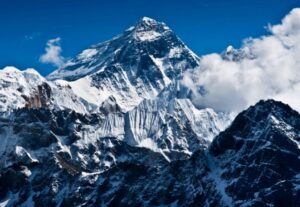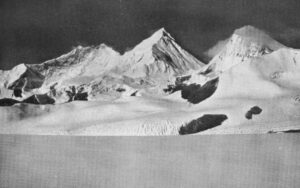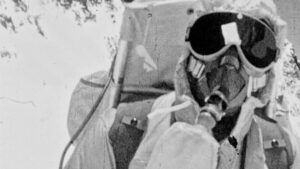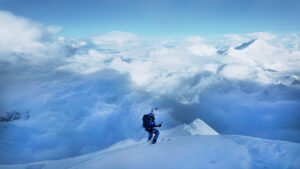Last week, the Sherpa team known as the Icefall Doctors completed the route through Everest’s hazardous Khumbu Icefall. They dealt with remarkably tough conditions because the ice was badly broken after a dry winter. But this year, cargo drones supported their work, helping minimize risk on the most dangerous section of the mountain.
We spoke with Raj Bikram Maharjan, CEO of the Nepal-based company in charge of operating the drones. We discussed their work on Everest and how drones can improve conditions for local workers.
Helping the Icefall Doctors
Maharjan is an aeronautical engineer who, after five years as an aircraft technician, started Airlift Technology to provide drone services. They offer everything from drone-assisted mapping to filming services. They are currently focussed on using drones for aerial delivery, and last year they took the job to the highest level.
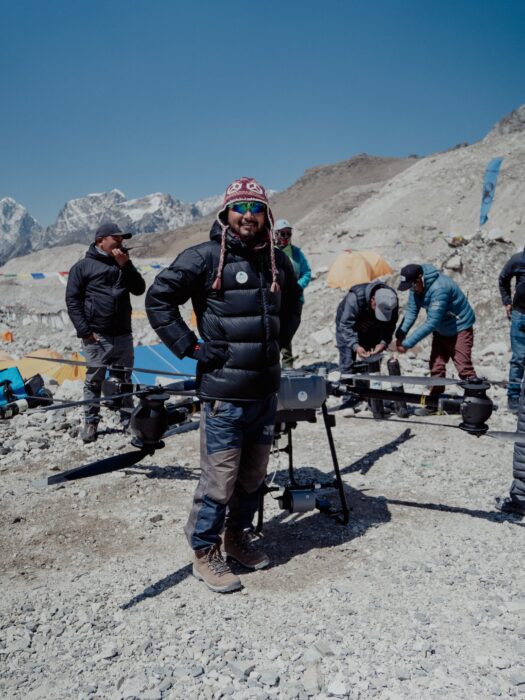
Raj Bikram Maharjan at Everest Base Camp last year. Photo: Airlift Technology Nepal
In the 2024 spring season, Airlift Technology partnered with Khumbu Valley Municipality for some preliminary tests to see how they could use drones on Everest. Positive results prompted the Sagarmatha Pollution Control Committee (SPCC) to request their services.
Airlift Technology agreed to help equip and maintain the route to Camp 1 through the Khumbu Icefall and manage the waste produced by climbing expeditions.
Taking some weight off the Sherpas
“We use DJI Flycart 30 drones. These can lift 30kg, supplying oxygen cylinders, ladders, ropes, and anything the Icefall Doctors may need to fix the Khumbu Icefall. This way, the Sherpas can climb without loads on their backs and focus on finding the best route to Camp 2,” Maharjan said.
Then, as the season unfolds, the drone team will assist the SPCC with a cleaning operation around Camp 1 and Camp 2. The drones will fly up and down to Camp 1 at 6,000m. There, the SPCC will gather garbage bags and hook them to cables attached to the drones. The drones will then deliver the trash to Base Camp.
Life-savers
The drones can fly reliably to 6,000 meters.
“[The drones] do have altitude propellers, but we are not risking flying to Camp 2 [at 6,400m] for the time being because there are people on the mountain,” Maharjan said. “But if everything goes well through the season, we plan to test the flight capabilities by taking them to Camp 2 after the climbers have gone down. But only if conditions are still safe by then.”
“I used to build drones since my college days; they were just a hobby to me. But after the 2015 earthquake, I realized how important drones could be and how they could save lives in the aftermath of a disaster,” Maharjan explained.
The devastating April 2015 earthquake killed nearly 1,900 people and injured 21,000. It left huge areas destroyed and isolated, especially in Langtang. It left thousands homeless. On Everest, it triggered an avalanche on Pumori that hit Base Camp, killing 22 people.
“In 2024 we tested drones to supply emergency medical supplies and oxygen,” Maharjan said. “Drones improve safety; they are here to stay.”
Helicopters versus drones
Maharjan believes drones present important advantages, especially when compared to helicopters.
Helicopters are often used between Kathmandu and Everest Base Camp. They are sometimes used to carry loads (and bring down climbers) from Camp 2, but their use is only permitted for emergencies. They are controversial because of the risk to pilots, the environmental impact, and a history of misuse when climbers want to skip the Icefall on their descent.
“Compared to helicopters, drones are incredibly cost-efficient and fuel-efficient. They are less noisy,” Maharjan said. He claims their drones are very quiet and are powered with batteries, so they don’t produce exhaust fumes.
Though the company still needs to charge the drones’ batteries with a generator in Base Camp, the fuel cost is very small compared to what you need to fly a helicopter at altitude. Drones can’t carry the same size loads, but the cost-saving still makes several smaller trips better value than a helicopter journey.
Maharjan also hopes to eventually get rid of the diesel generators: “We are looking at alternative energy sources such as solar, mini hydro generators, and large battery packs.”
Other uses for the drones could include body retrieval. “We are planning on bringing dead bodies down if their families request it,” Maharjan said.
Annapurna’s tragic example
The Khumbu Icefall is just one example of a particularly dangerous section in the 8,000’ers. The Great Serac on K2 (unfortunately, much higher up) and the avalanche-prone area between Camp 2 and Camp 3 of Annapurna, pose similar problems.
That area on Annapurna has already taken lives this season. Gnima Tashi and Rima Sherpa were carrying oxygen when an avalanche swept them away to their deaths.
“If drones had been used, those two lives would have been spared,” Maharjan claims. “We have the technology well tested and the place where these two people lost their lives was within reach of our drones, who could have done the job instead.”
For Maharjan, this is a stark reminder to expedition operators that they must start relying on technology to make mountains safer.

The drone operators in Lukla, with Maharjan third from the left. Photo: Airlift Technology Nepal
Asked if the increasing use of drones could lead to local workers losing jobs, Maharjan says that locals have welcomed the change.
“We were skeptical when we started doing tests with drones on Everest last year. We expected some protests from local communities that might think their jobs are in danger, but they were happy,” Maharjan recalled. “The Sherpas were looking forward to focusing on climbing the mountain and guiding their clients, instead of just going up and down the most treacherous part, carrying heavy loads and risking their lives with each step.”
